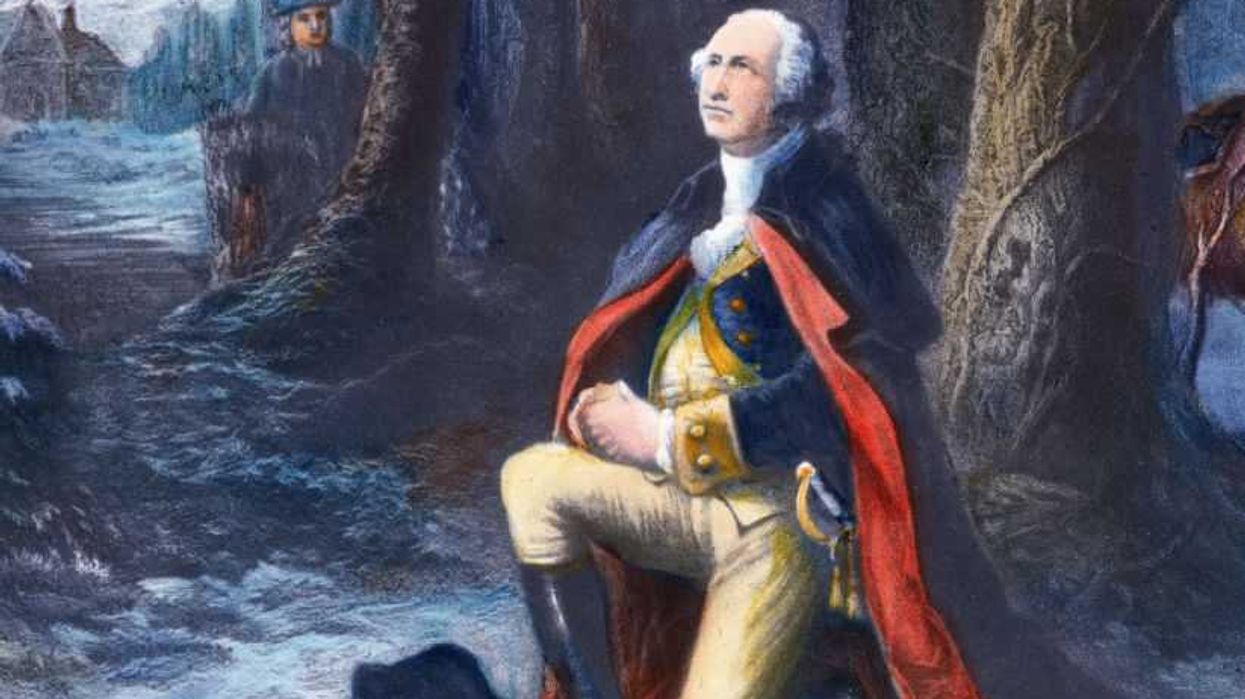On radio this morning, Glenn played audio dating all the way back to 2009 National Conference of State Legislators, where Common Core funder and supporter Bill Gates spoke candidly about the education system’s goals. In the wake of a growing number of alarming stories about Common Core – including the Maryland dad who was arrested for raising concerns about the system and the various textbooks that have been found to contain questionable information – Gates’ remarks take on a frightening new meaning.
GATES: Fortunately, the state-led Common Core State Standards Initiative is developing clear, rigorous common standards that match the best in the world. Last month, 46 Governors and Chief State School Officers made a public commitment to embrace these common standards.
This is encouraging—but identifying common standards is not enough. We’ll know we’ve succeeded when the curriculum and the tests are aligned to these standards.
Secretary Arne Duncan recently announced that $350 million of the stimulus package will be used --
“Think of that. $350 million from stimulus,” Pat said. “$200 million now from Gates. I don't know how much from Yahoo [and Google]. But we're easily close to 700 million right now. We might be close to a billion dollars.”
“No, it is stunning,” Glenn said. “And, by the way, what Bill Gates is announcing – the White House has in past said ‘That's not true. We're not doing any of that stuff.’ I mean everything he's talking about…
“He spills it all here,” Pat interjected.
GATES: -- to create just these kinds of tests—next-generation assessments aligned to the common core. When the tests are aligned to the common standards, the curriculum will line up as well—and that will unleash powerful market forces in the service of better teaching.
“Stop. Wait a minute. It will unleash a powerful market for people looking to learn how to teach the children,” Glenn asked. “And so what they're saying here is Bill Gates is developing software that will be used in this. That's why he's investing all of this money because Microsoft will be able to own and sell all of the software for this particular system. So they've really invested in it. Let's get this system through because look how much money – we have a ‘powerful’ new market.”
“Now, can you imagine saying that about anything else,” Glenn continued. “Imagine if McDonald's [or Coca-Cola or Pepsi] said, ‘If we can just get this through, our charitable arm of Coca‑Cola has put in all of this stuff in lunch rooms because it will be good for the kids and healthy, but it also will provide us a powerful new market.’ It’s amazing.”
“This is an amazing moment of honesty from Gates because normally he would sell this, I would think, in that, ‘Umm, I really believe in this because our kids will grow up to be better employees and they will be able to work at Microsoft and we'll have more skilled, trained employees in the future,’” Pat said. “That's the way I'd be selling it if I were investing $200 million.”
One of the aspects of Common Core that hasn’t been discussed at any great length is the idea of creating a new generation, a new work force that has been educated in a specific way.
"Could we, could we just look at that, though, for a second because on the surface, that does sound good. That, oh, they're going to train for a job. Okay. You've got a corporation training people not by choice,” Glenn said. “Let's say the Glenn Beck School of Broadcast. If you want to come to the Glenn Beck School of Broadcast, you can come to the Glenn Beck School of Broadcast and I'll teach your kids about history and everything else, all the way up because it will provide great new reporters for TheBlaze, great new filmmakers for TheBlaze. That's great. That would be your choice.”
“But if Glenn Beck was putting in all of this money and dumping it in because I say ‘I'm going to have all these new trained workers and I'm going to help design the curriculum and everything else,’ if I and a group of other industrialists were all getting together and saying, ‘Let's do this because this is going to be good for us,’ that's evil,” he continued.
“That's one of the aspects of this Common Core thing we haven't really talked about much is that part of this plan is to pigeonhole the kids into a certain line of work. And they are going to decide, by the time they are in junior high or something, middle school. The plan is to know whether they are going to be a technician, a mechanic or a doctor. And then you funnel them through that system.”
GATES: For the first time, there will be a large uniform base of customers eager to buy products that can help every kid learn and every teacher get better.
“So let's just translate. So this is great because it's going to help kids learn. But, listen to me. There are going to be a long line of customers. Uniform customers,” Glenn said. “I just have to make one product because nobody's going to get out of that product line… He starts in the beginning talking about how this is a state run, state run, state run. No, it's not. Why is the U.N. involved in this? It's state‑run. The governors have been convinced, ‘Oh, they came up with this. No, they didn't. Don't you see, you governors, you've been played. Now, an honest governor will come out in an honest moment and reflect and say, ‘Gosh, was I played? Wait a minute. What?’ These governors are all taking ownership of this and they didn't have anything to do with it. And they want to believe that they are changing everything for the better, and they are not.”
“We are dealing with evil. And if you want to look at it just from the standpoint of not manipulating our children with their data and everything else, just look at it. Leftists, just look at it as gigantic corporations going in and controlling your children's future. Don't you want your child to be able to say, ‘No, there's more to me than an employee of Microsoft.’ ‘There's more to me than an employee of GE or an employee of Google,’” Glenn continued. “Maybe my kid wants to put Google and Microsoft out of business. There's more to me than just a worker for somebody else. I mean, it's incredible how we are enslaving ourselves and doing it so clearly.”

 AASHISH KIPHAYET / Contributor | Getty Images
AASHISH KIPHAYET / Contributor | Getty Images
 Harold M. Lambert / Contributor | Getty Images
Harold M. Lambert / Contributor | Getty Images Adam Gray / Stringer | Getty Images
Adam Gray / Stringer | Getty Images Anadolu / Contributor | Getty Images
Anadolu / Contributor | Getty Images